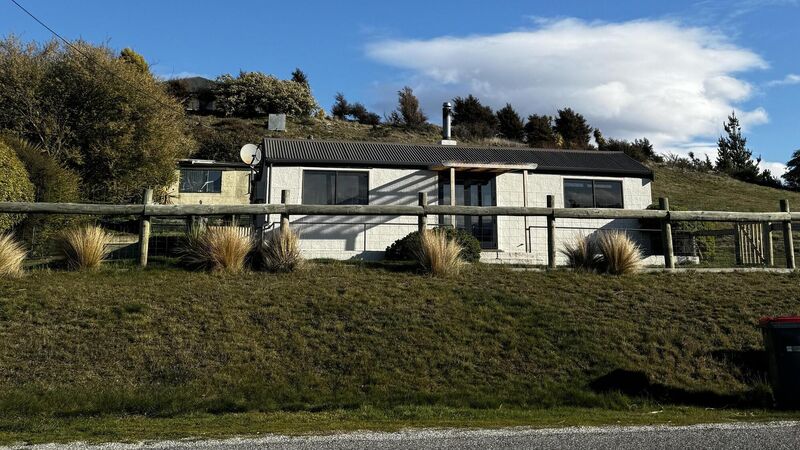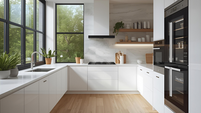The New Zealand Bach - the Kiwis' pared-back escape huts

Baches are commonly available to rent, and you will find options ranging from tiny wood cabins to sprawling beachside villas with hot tubs and a jetty for your yacht.
I am on week two of my antipodean holiday, having spent last week in Christchurch, New Zealand.
This week we ventured down south to Wānaka, a stunning lakeside town nestled between the scenic Southern Alps and the picturesque Lake Wānaka. Situated less than two hours from the more well-known Queenstown, Wānaka is a popular bolt-hole for well-heeled New Zealanders. The summer hikes and biking trails attract thousands every summer, and the nearby ski resorts of Cardrona and Treble Cone bring in even more adventure seekers each winter.

All these people need somewhere to stay, which is where the “bach” (pronounced batch) comes in. While holiday homes are common everywhere, the bach is uniquely Kiwi, and though some have evolved into all-mod-cons luxury homes, the original bach is relaxingly rustic, designed by those who prefer spending far more time outdoors than in. I love this idea of a pared-back escape hut, and I explored some local baches this week along the Lake Wānaka coastline.
The origin of the bach
The colloquial definition of a bach is “something you built yourself, on land you don’t own, out of materials you borrowed or stole”, which to me has an appealingly subversive connotation. The first baches in the late 1800s were literally built into small caves with basic porch-style boarding out front to serve as a door and windows. Most of these were used as holiday homes, although some people did live in them full-time.
New Zealand is a land of stunning scenery in remote places, and baches began springing up around the country following the Second World War, when more roads were being built providing Kiwis with easier access to the beautiful landscapes. An authentic bach is really just a cabin or a shack, sparsely fitted out, and very small. In fact, the origin of the word itself is said to come from an old Welsh word for small (some say it’s short for bachelor pad but I prefer the former etymology).
The basic bach
As a lover of tiny homes, I find the forced minimalism of a small space to be deeply relaxing. Less space means less stuff, less fuss, and less maintenance, which is the whole idea of the bach. Originally, baches didn’t even have plumbing or electricity — in fact some authentic baches to this day still only have a “long drop” toilet (I’ll spare you the details, but it is a very basic waste management solution).

Basic baches are typically built from scrap material and kitted out with hand-me-downs and thrifted furniture. Decor in the basic bach is fun, colourful, and doesn’t take itself seriously. The goal is to simply have somewhere to kick back and relax after a long day exploring the stunning New Zealand wilderness.
The evolution of the bach
Building a house on land you don’t own with stolen materials is, of course, illegal (or at least frowned upon). Our general standards of living have risen significantly in the last century too. Utility connections and road access have spread widely across New Zealand, and of course, building codes, regulations, and insurance mean that throwing up a ramshackle structure anywhere you like is not feasible. It is also no longer necessary to have a shack built out of pilfered corrugated iron when constructing a basic cabin with plumbing and electricity is no longer a difficult task. The bach has naturally evolved too, and while the core tenet of escapism remains, some modern baches are also the epitome of comfort and luxury. Baches are commonly available to rent, and you will find options ranging from tiny wood cabins to sprawling beachside villas with hot tubs and a jetty for your yacht.
Having spent a happy afternoon browsing bookabach.nz, I have concluded that the average modern bach is small, minimalist with a nod to kitsch, located somewhere stunning, built from modern lightweight materials, and kitted out with basic amenities — for example, a wood-burning stove but no central heating.
Notable baches
Some of the original cave baches remain in Taylor’s Mistake, an idyllic coastal village outside Christchurch. These days most of these baches are a source of controversy amongst locals, many of whom claim they are an eyesore and a hazard, although some are still lived in and serve as well-maintained links to a unique history. In a move that feels like something has come full circle, “Synchronicity” — a multi-million dollar four-bedroom bach overlooking Lake Wānaka — was recently sold by its owner (a multi-millionaire) in an effort to “simplify his life”. Some beautiful examples of the core spirit of using borrowed or recycled materials to build baches can be found at Waikawau, in Coromandel — a beautiful seaside town in New Zealand’s North Island. These baches are made from old trams that ran through Auckland in the mid-20th century.

Unlimited access. Half the price.
Try unlimited access from only €1.50 a week
Already a subscriber? Sign in
CONNECT WITH US TODAY
Be the first to know the latest news and updates












